What Is a Cadence? (Harmony I.09)
music·@monadnock·
0.000 HBDWhat Is a Cadence? (Harmony I.09)
[slides and explanatory info below are taken from one of my undergraduate music theory lectures (first semester)] 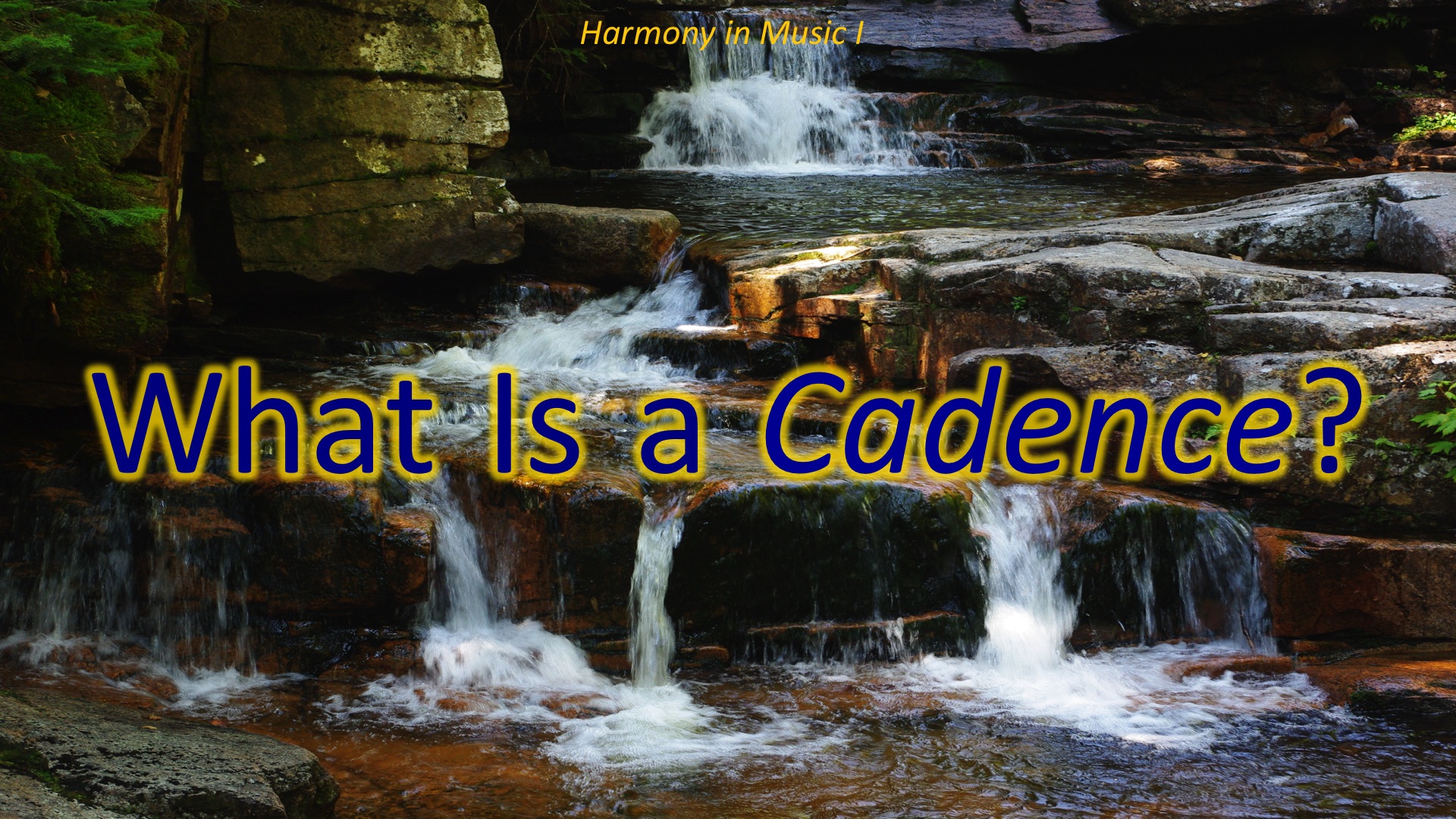Rivers, Creeks, Brooks, Cascades, Rapids, Waterfalls, all evoke scenes of water, flowing downstream, thanks to the forces of gravity and friction.  That is, until the water reaches a destination, either a Lake, Reservoir, or Ocean, and stops flowing downhill. We can evoke such imagery to find its parallel in music, because ... 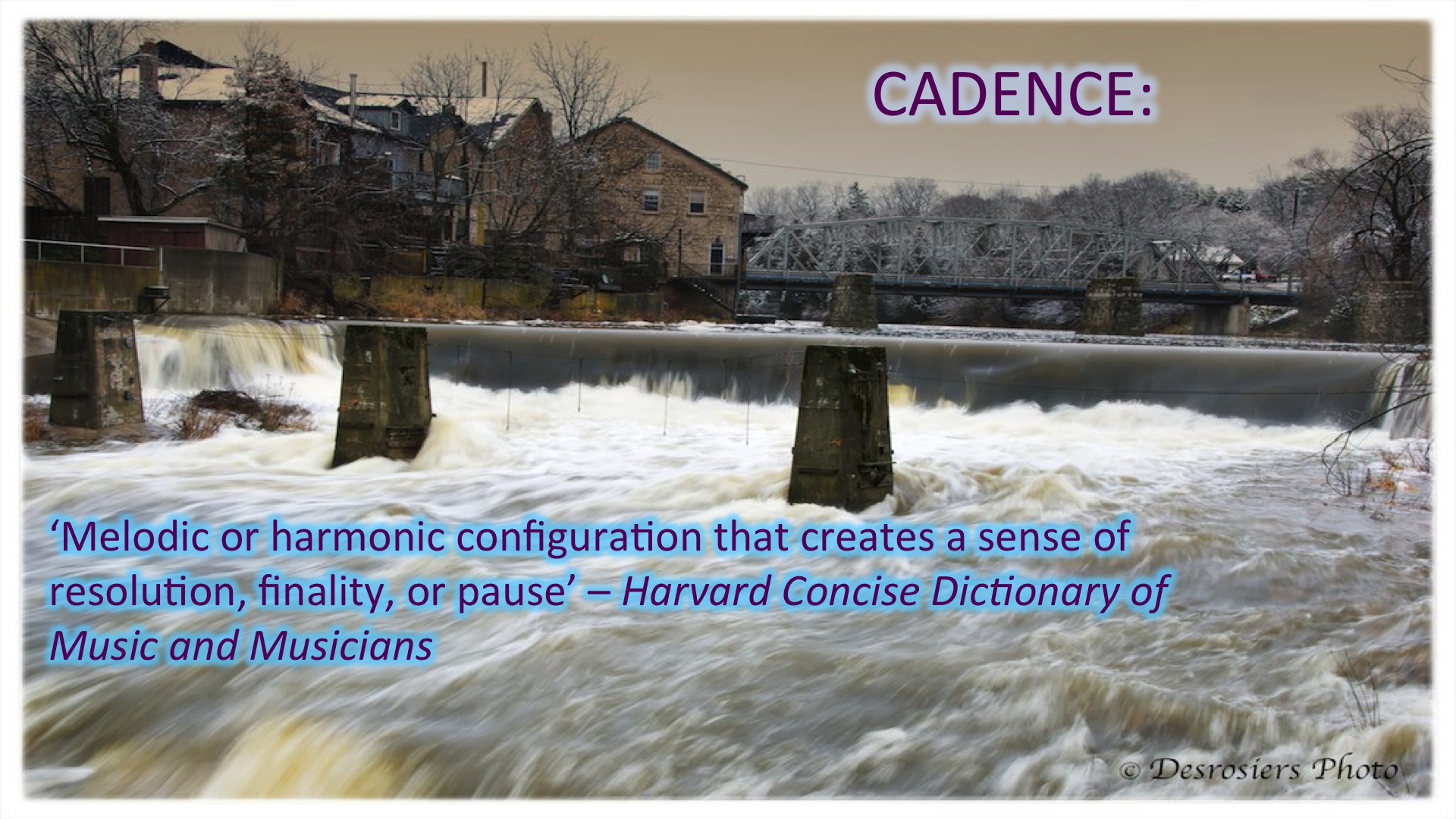 … Music also has a characteristic flow to some sort of *harmonic* destination, or ending, with one or more interesting attractions along the way. A harmonic destination that affects or interrupts forward motion is called a ***cadence***. Cadences make music more attractive to listeners, just as waterfalls and rapids attract photographers. 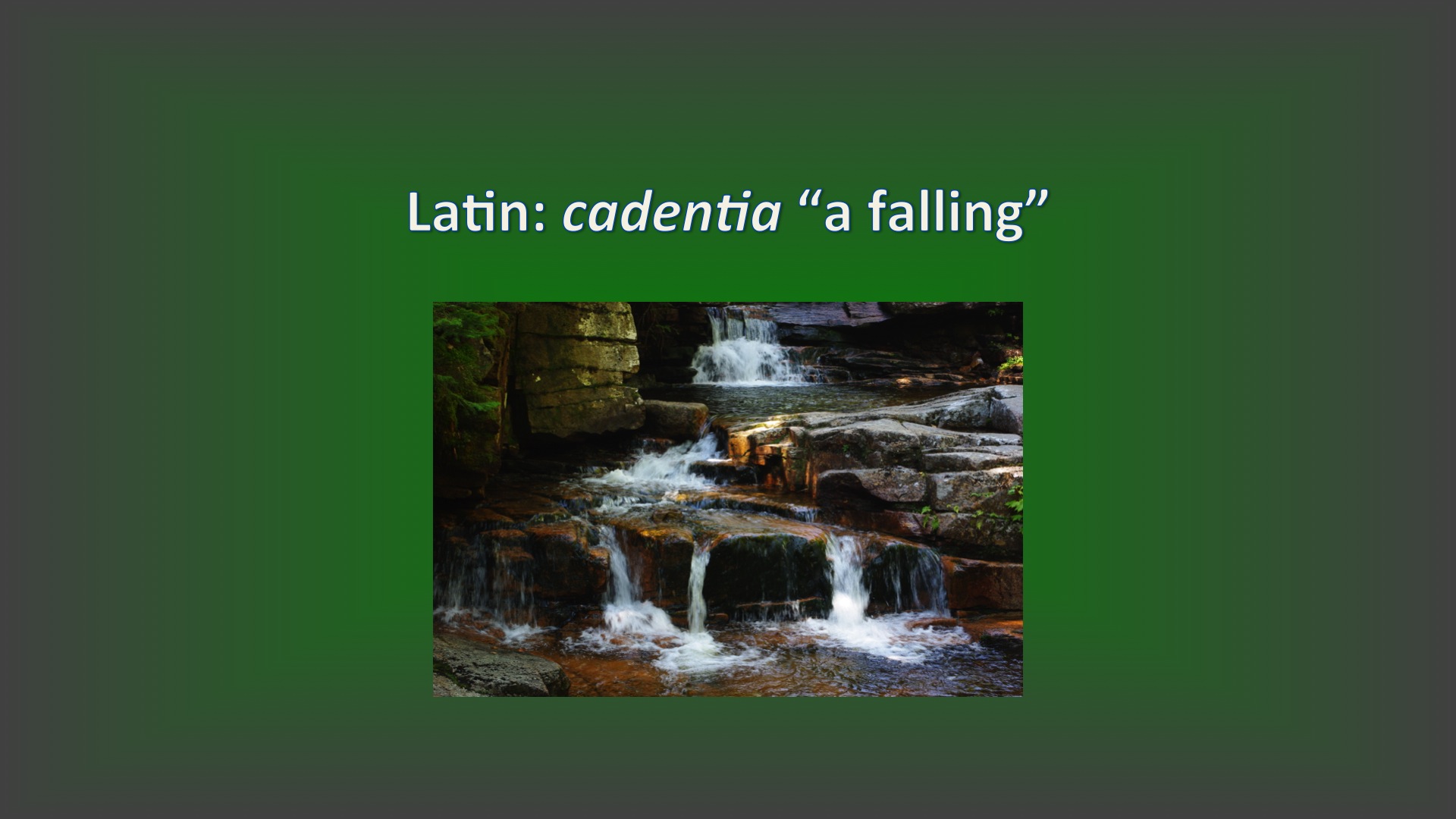 Latin *cadentia*, "a falling" From this point on, most of our harmony exercises – and indeed, most phrases in actual music – will contain a cadence. Cadences are in some ways like waterfalls, which temporarily interrupt the mostly *horizontal* motion of the stream, though the actual current doesn't stop. 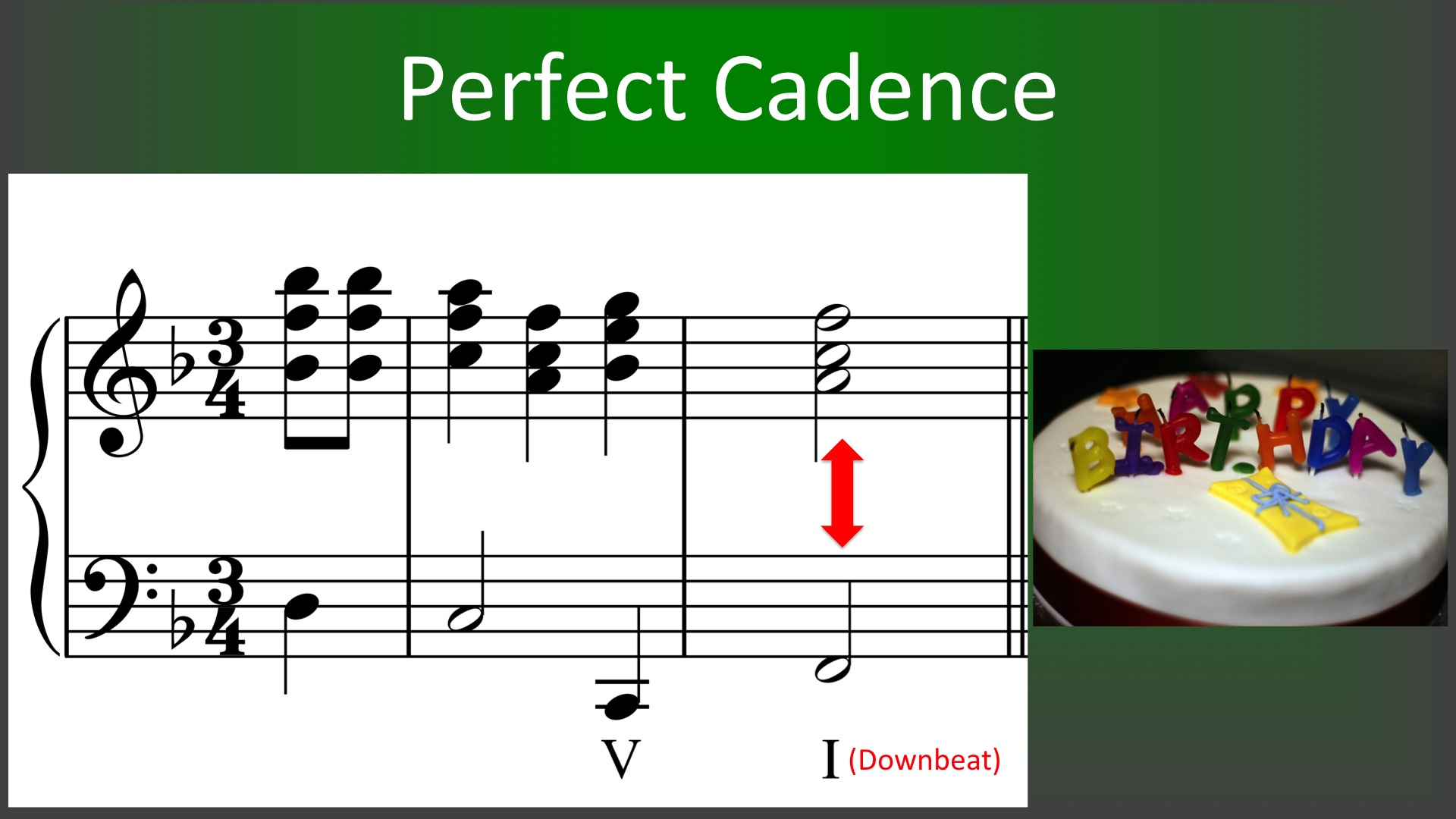 Each musical phrase ends with a cadence, and there are several sorts of cadences. In the most complete type, the closing chord FALLS on the metrical *downbeat* of the last bar, the accented part of the final measure. [Play] That is a *Perfect Cadence*. 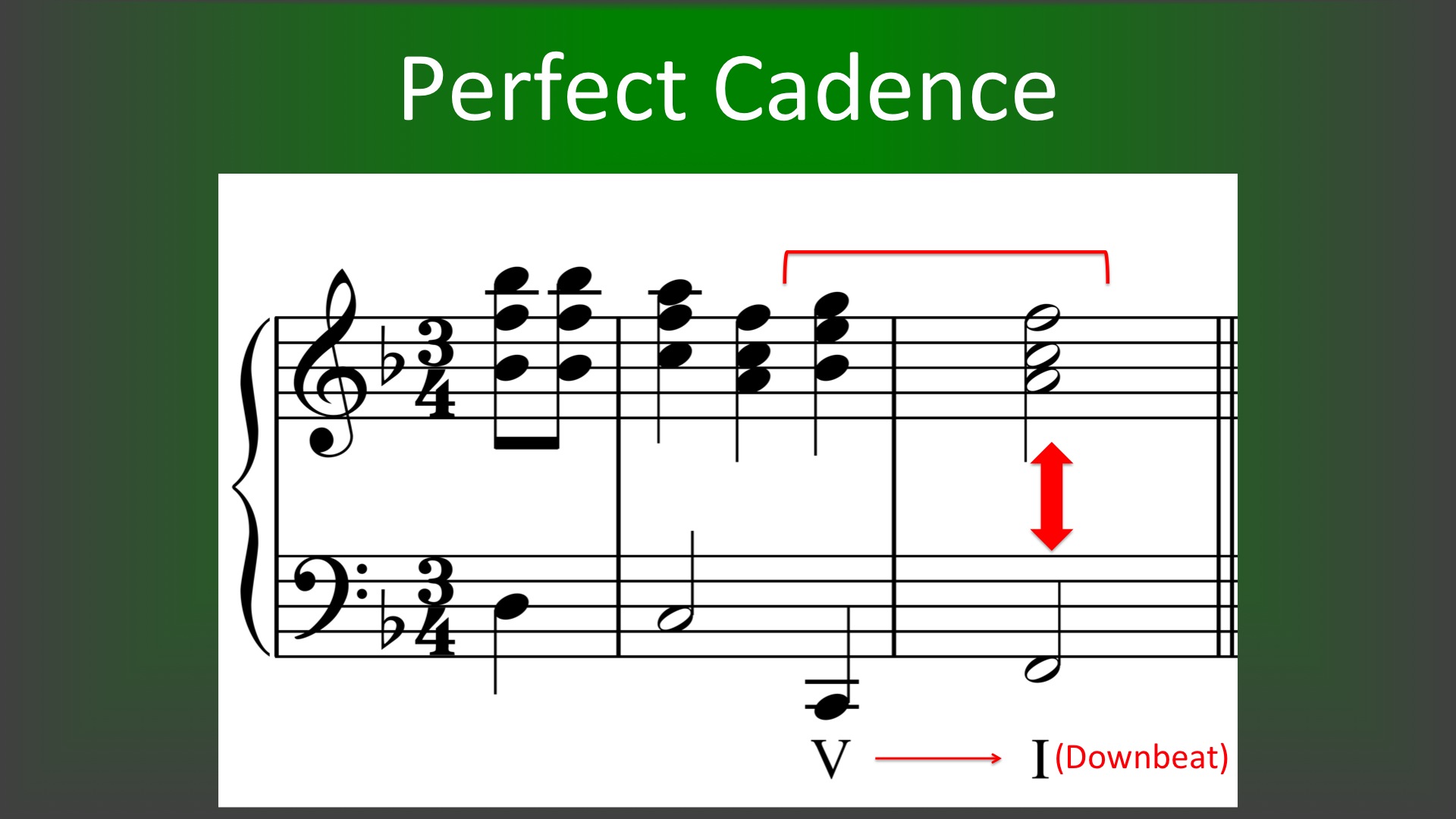 Now listen to the cadence itself, which is just the *last two chords* and melodic tones of this phrase. [Play] Perfect cadence. 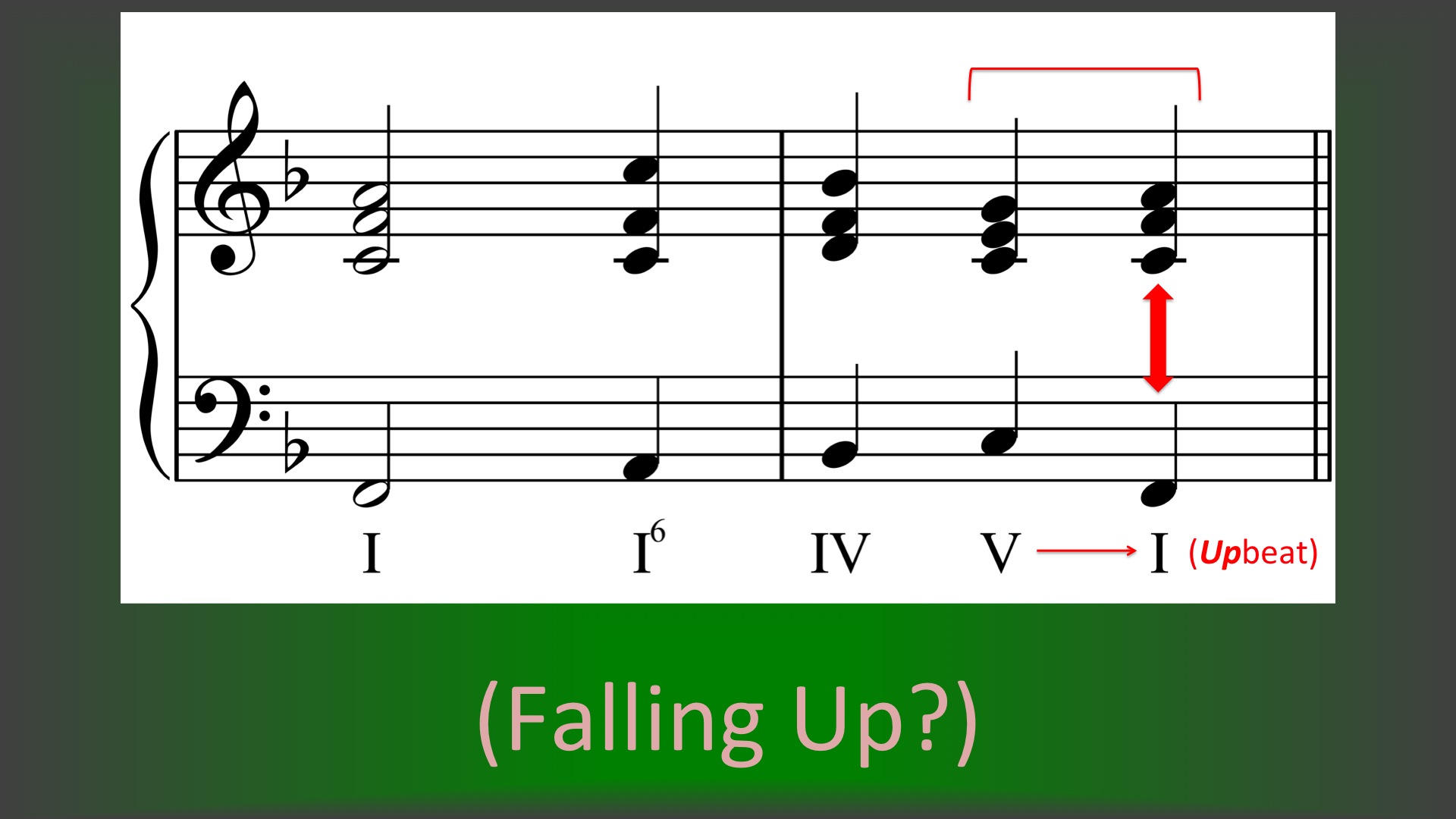 On the other hand, the final tonic chord in this next example is on the wrong beat, for a cadence. [Play] Because the last chord here does not occur on a downbeat, but on an upbeat, there is no cadential feeling here; the solid 'fall' to the tonic is missing. How does it sound to you … 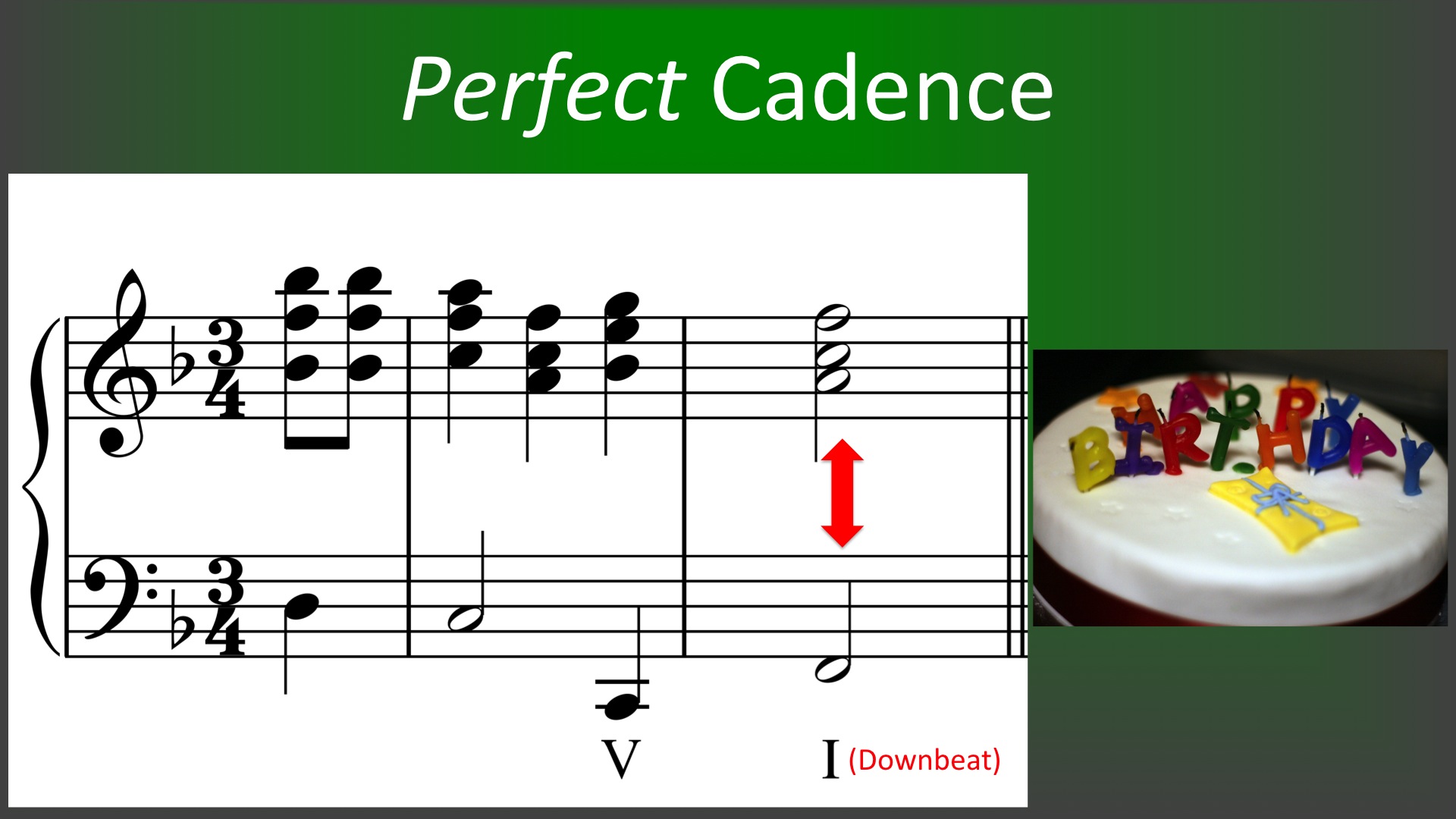 … compared to the Perfect Cadence? [Play the 2-bars of ‘Birthday’ again] Perfect. 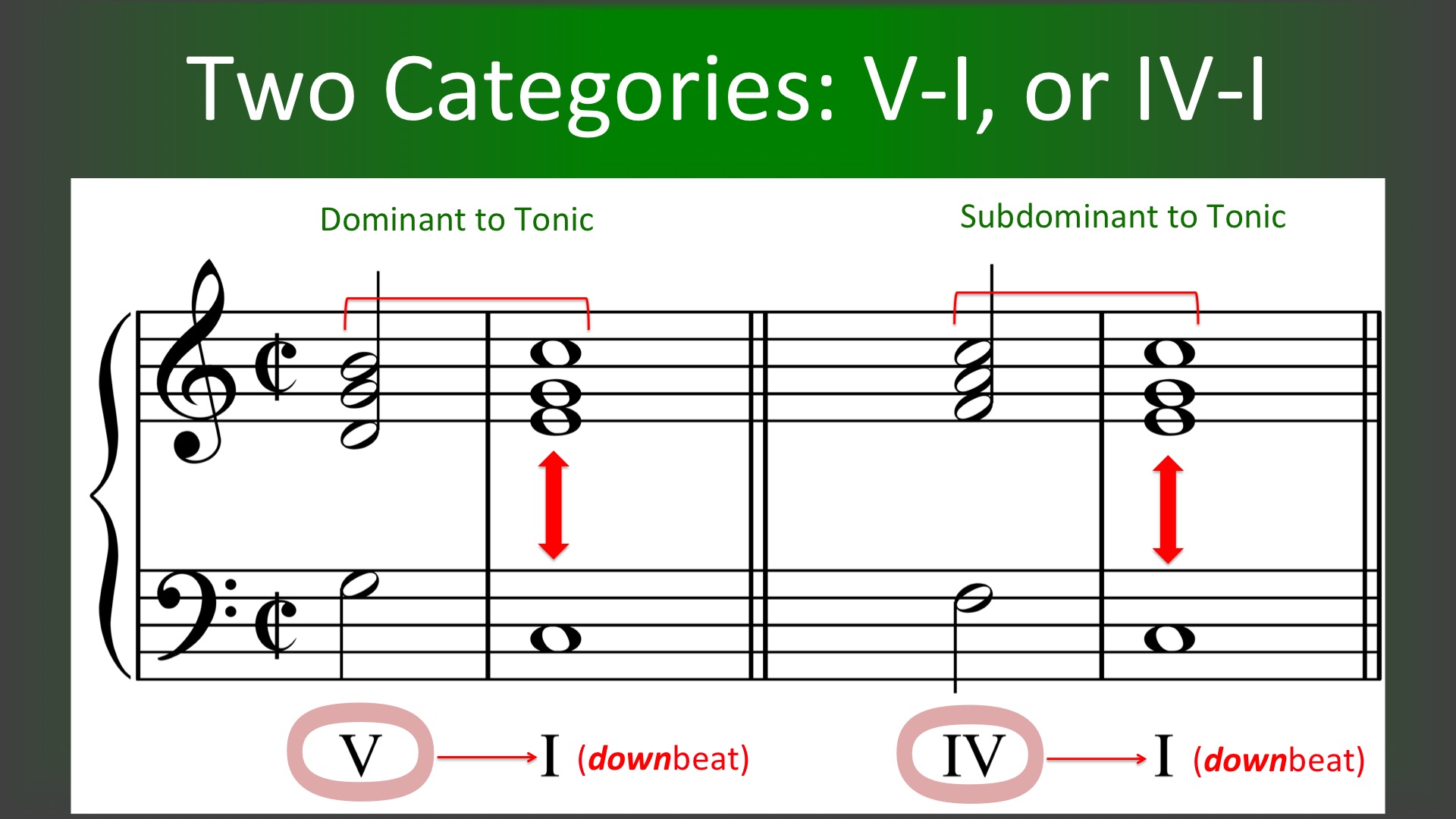 The perfect cadence always ends with the tonic or I chord falling on the downbeat, but it is the chord right before the end – the *penultimate* chord - which determines the category of cadence. Listen to the two possibilities. [Play] 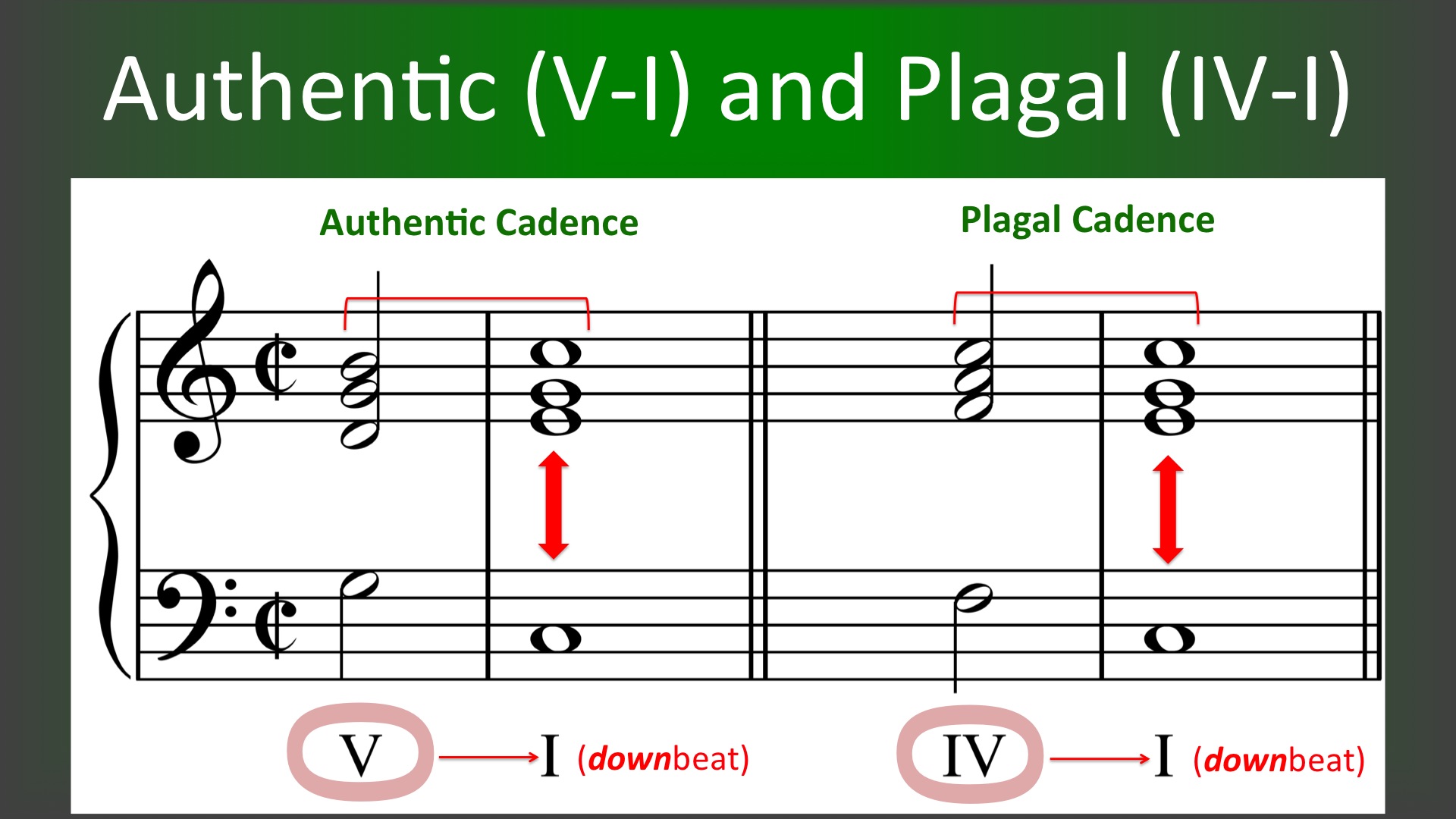 So, when the cadential formula 'falls' from V to I, we call it an *Authentic* Cadence, and when the closing proceeds from IV to I, a *Plagal* Cadence. [Play]  There are of course *perfect* cadences, and there are also *imperfect* cadences, as well as half cadences, deceptive cadences, etc., all of which will eventually be explained through the course of your studies. 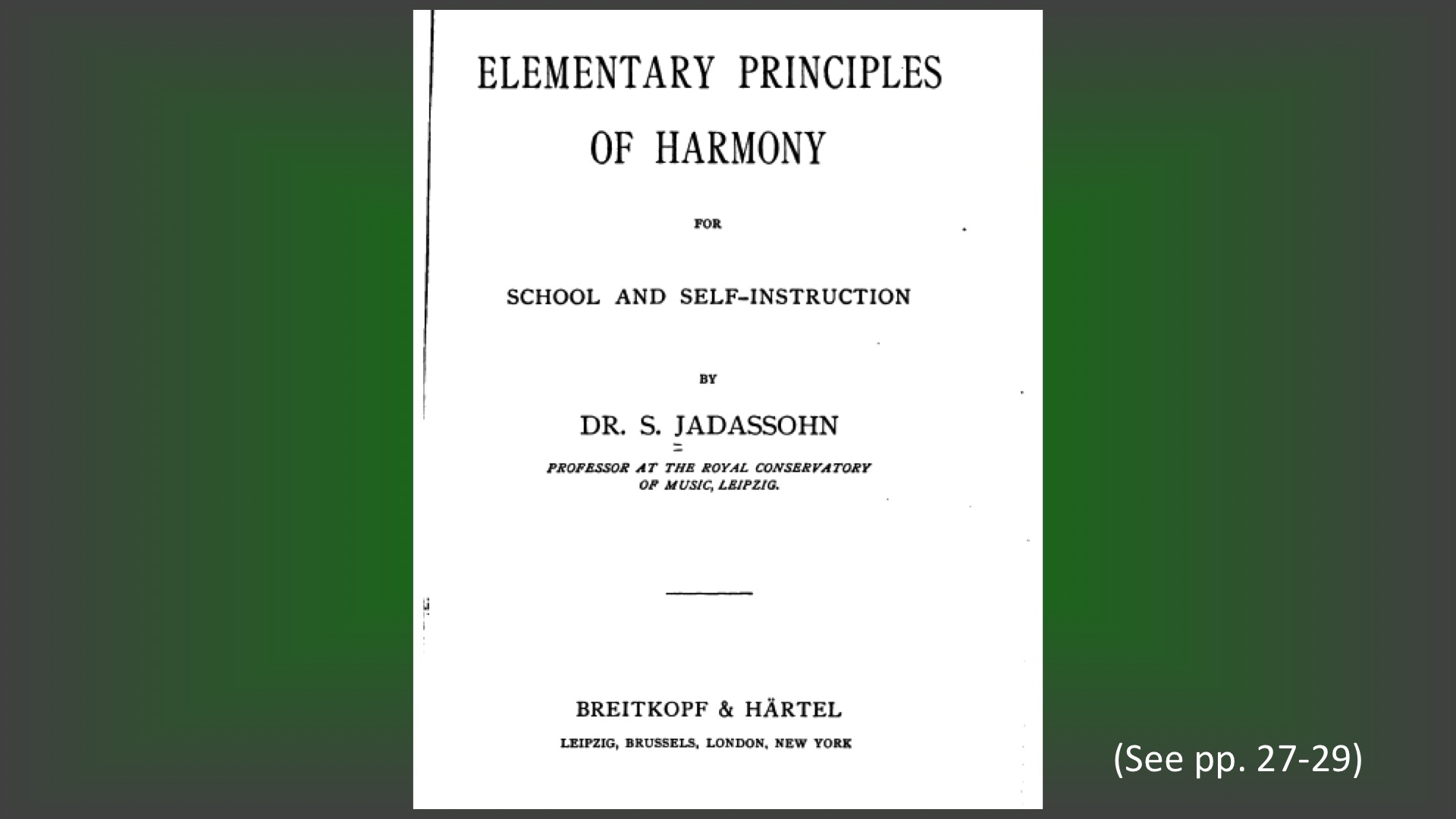 Perhaps you've already reviewed the sample exercises from the 19th century textbooks linked in previous talks. If not, you will find links in the description [below]. Take the time to transcribe some or all of the examples found on pages 27-29 of this book, to give yourself a hands-on familiarity with how to do upcoming harmony exercises. 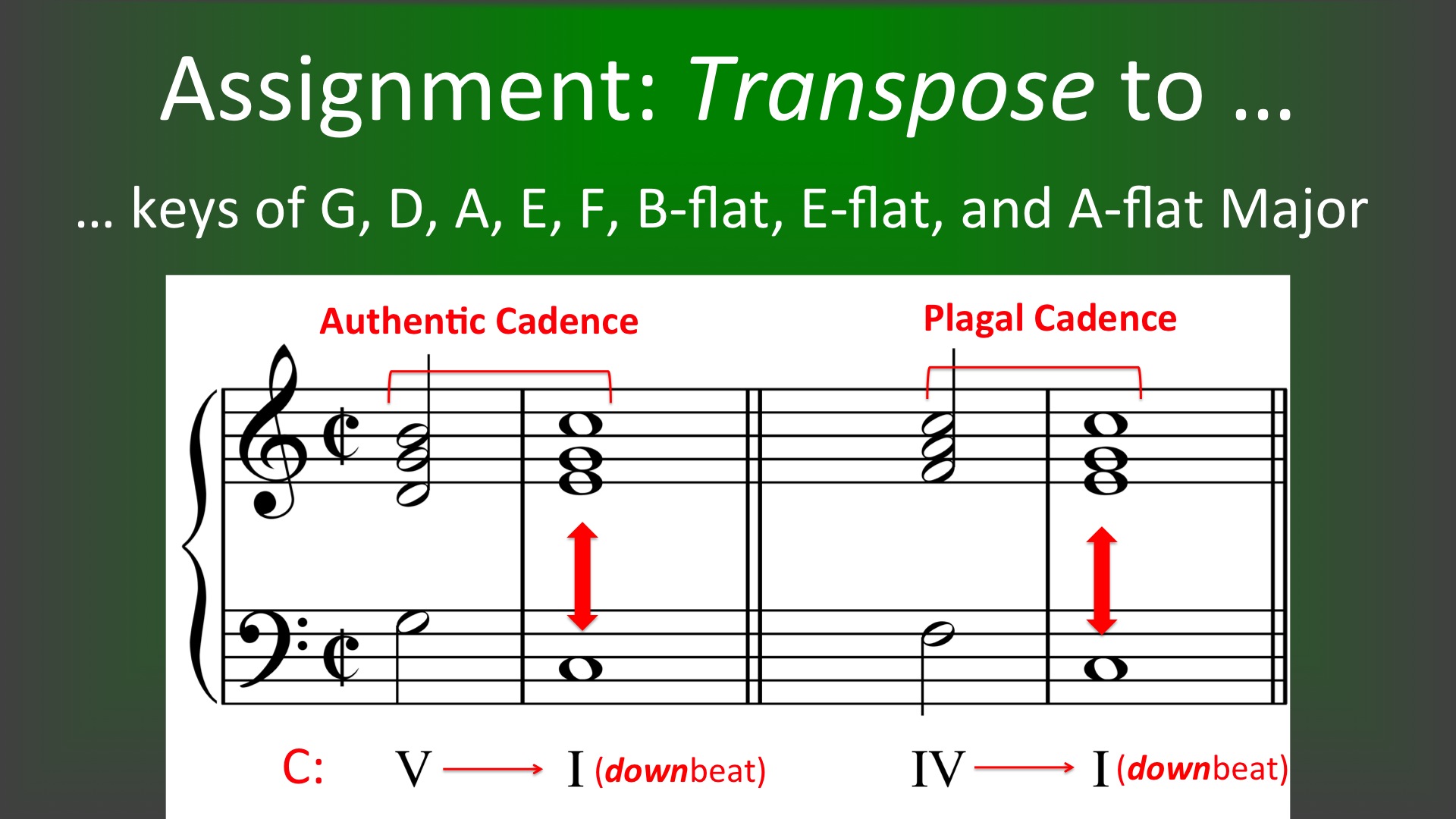 In addition, you should absolutely practice transposing the two cadences shown here to the following Major Keys: G, D, A, E, F, B-flat, E-flat, and A-flat Major. Do your work with pencil on paper, add **key signatures, Roman numerals,** and mark each cadence as either *Authentic* or *Plagal*. Finally, **play** these transposed cadences in each of the keys, on your piano keyboard. Finished? Post a comment to let us know how you did, or if you have any questions, or suggestions for future topics. Resteem/share, and upvote if you like. Here is ... 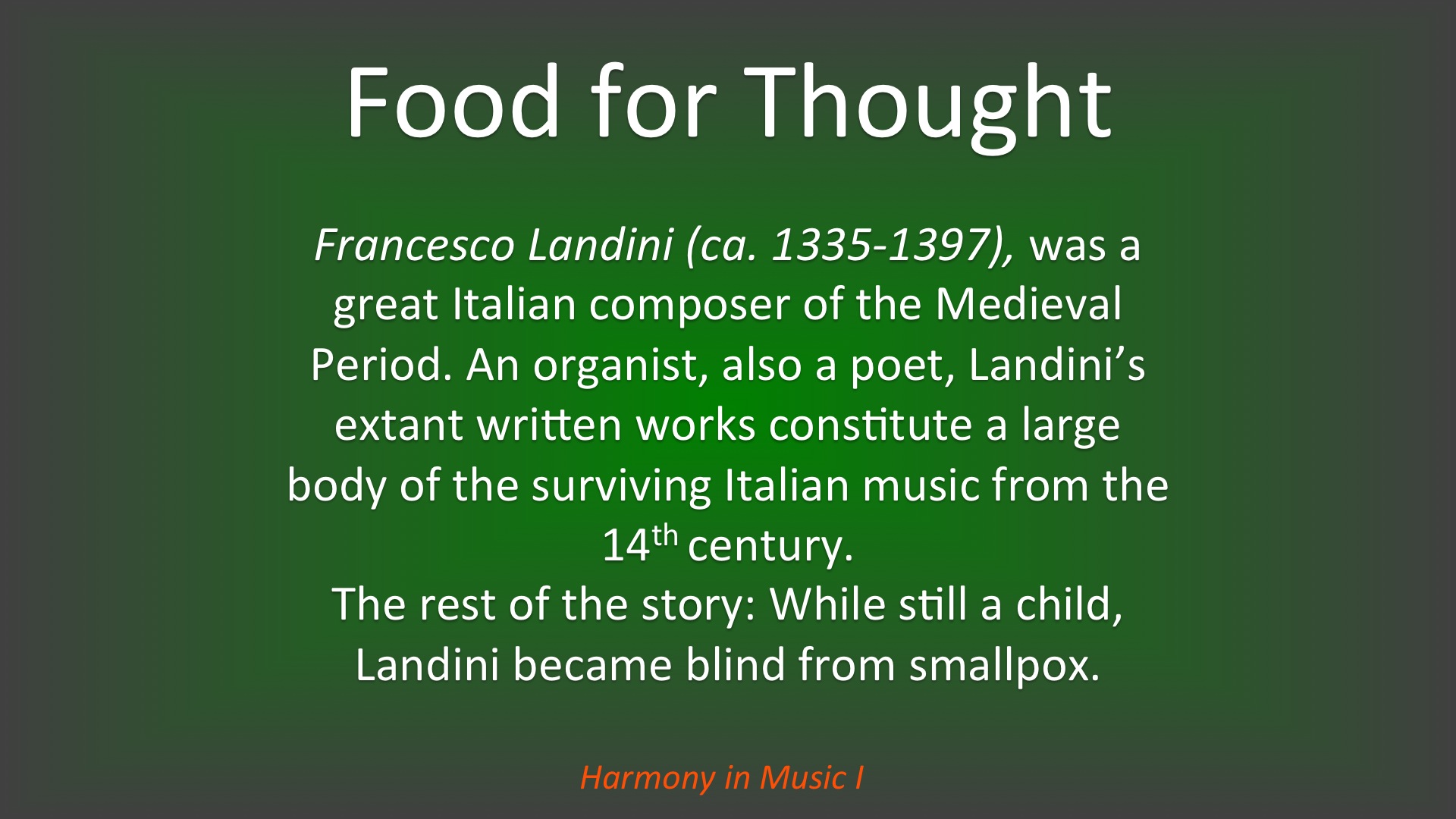 Food for Thought. IMAGE CREDITS Waterfall, Chris Luczkow: https://flic.kr/p/8xGeR5 Lake Superior, steveandtwyla : https://flic.kr/p/7M9Uo6 Grand River Rapids, Brian Desrosiers Photograph: https://flic.kr/p/bG96bn Birthday Cake, Pete: https://flic.kr/p/7wovH2 Creative Commons License: https://creativecommons.org/licenses/by/2.0/legalcode The Happy Birthday to You song is out of copyright and therefore in the Public Domain. Public Domain Mark: https://creativecommons.org/publicdomain/mark/1.0/ REFERENCES AND LINKS Jadassohn, Dr. Salomon. *Elementary Principles of Harmony for School and Self-Instruction*. Breitkopf and Hartel, 1895. A Public Domain work. Jadassohn, Dr. Salomon. *Manual of Harmony*. Breitkopf and Hartel, 1890. A Public Domain work. Internet Archive Links – must copy url and paste into browser – for download of *Elementary Principles*: https://archive.org/details/elementaryprinc00goog Internet Archive Links – must copy url and paste into browser – for download of *Harmony*: https://archive.org/details/manualharmony00pasmgoog #classical-music Original VIDEO from my music theory channel on *YouTube*: https://youtu.be/RgnkH-6URds Please feel free to donate, in order to support my music educational research (especially *after* the 7-day initial payout period has past!).